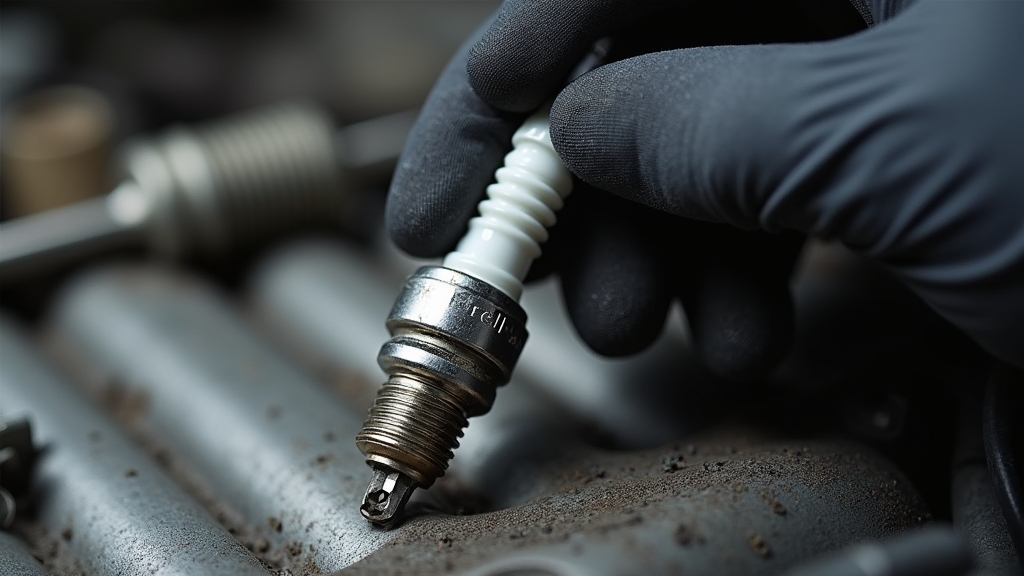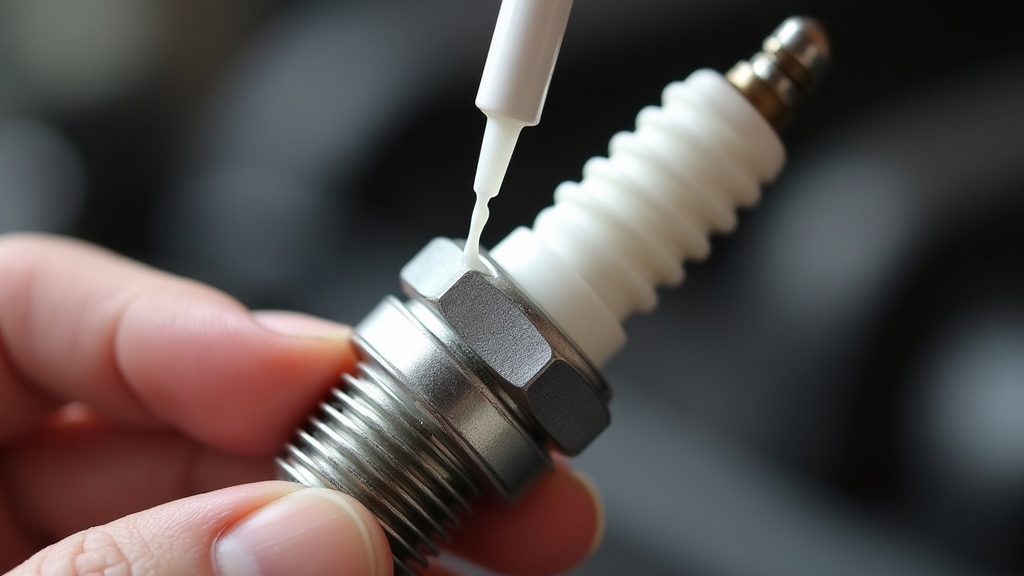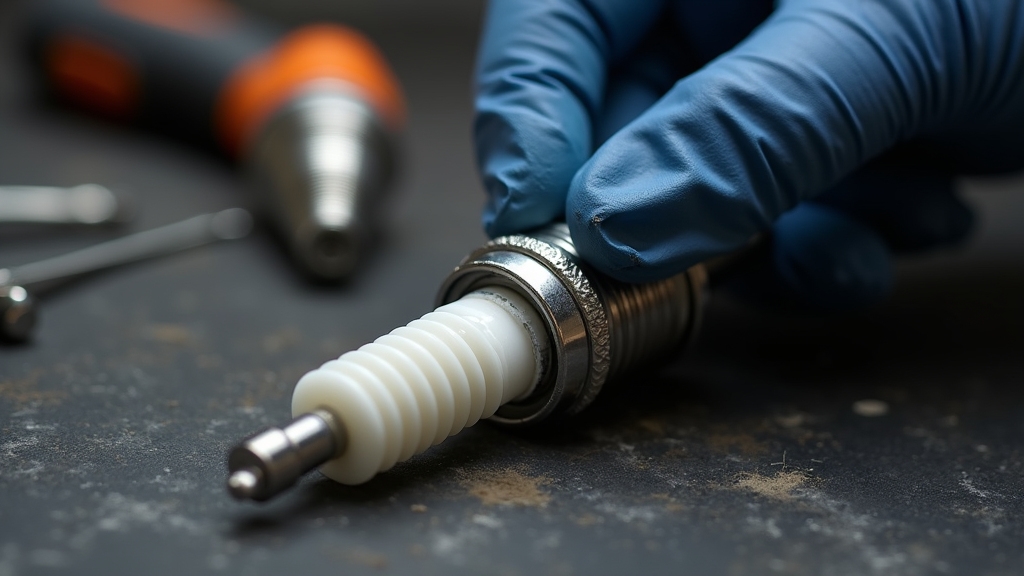Physical Address
304 North Cardinal St.
Dorchester Center, MA 02124
Physical Address
304 North Cardinal St.
Dorchester Center, MA 02124

To apply dielectric grease to spark plugs, first clean the plug and boot thoroughly. Use a small amount to coat the inside of the spark plug boot.
Lightly spread a thin layer on the ceramic insulator, avoiding metal terminals to prevent electrical issues. Make certain the boot fits snugly over the plug.
Wipe off any excess grease carefully. Following these steps helps prevent moisture and voltage leaks. For more detailed guidance on maximizing ignition performance, keep exploring the best practices.

Although spark plugs are designed to withstand harsh conditions, applying dielectric grease considerably improves their reliability by creating a moisture barrier that prevents corrosion and contamination.
You’ll find that its silicone base and silica filler form a hydrophobic seal, blocking water, dirt, and corrosive elements like road salts and salt spray. This protective layer maintains clean electrical contacts, essential for consistent spark delivery. Additionally, dielectric grease can be considered safer than some petroleum-based degreasers when used in sensitive engine areas.
Additionally, dielectric grease acts as an electrical insulator, preventing voltage leaks and arcing around the spark plug boot, which could degrade ignition performance. It is important to avoid applying grease directly on the metal terminal to maintain proper electrical contact and function.
When applying dielectric grease to spark plug components, focus on specific areas where moisture protection and electrical insulation are critical, such as the interior of the spark plug boot and the ceramic insulator.
Apply a thin coat inside the boot to prevent moisture ingress and electrical arcing. Use a small applicator to avoid excess grease. Proper application prevents sparks from arcing around or through the boot to ground.
Apply a thin layer inside the boot to block moisture and prevent electrical arcing.
Coat the ceramic insulator’s surface lightly to create a moisture barrier and ease future removal. However, never apply grease on the metal electrode or terminal. Also, lightly grease coil boots and seals on coil-on-plug connections to protect against corrosion and cracking. Ensure you use only a thin layer.
Avoid any grease on metal terminals to maintain proper electrical contact and prevent ignition issues. Wipe away any excess to guarantee ideal spark plug performance.

Applying dielectric grease correctly guarantees ideal protection without compromising spark plug performance.
Start by thoroughly cleaning the spark plug and boot to remove dirt, corrosion, or old grease. Use a cotton swab or your fingertip to apply a thin, even layer only on the ceramic insulator and inside the spark plug boot. This reduces the force needed to detach spark plug boots after long periods.
Using the right type of grease can also help maintain engine component protection over time. Avoid applying grease on the metal terminals to maintain proper electrical contact. Rotate the plug while applying to ensure uniform coverage.
Keep the amount minimal—excess grease can hinder boot installation and disrupt conductivity. Wear gloves or wipe your hands frequently to prevent uneven spreading and contamination. After application, confirm the boot fits easily over the plug. If you apply too much, remove the excess with a suitable solvent.
Since ignition systems rely on precise electrical connections, using dielectric grease is essential to prevent voltage leaks and unwanted arcing around spark plug boots. You’ll apply the grease to insulate high-voltage connections, ensuring efficient spark delivery and protecting against electrical discharge. Proper sealing also helps avoid contaminants that could impair ignition performance.
It seals gaps to block moisture, reducing corrosion risk and maintaining consistent electrical performance. This barrier extends the lifespan of spark plugs by protecting terminals from rust and voltage fluctuations. Regular maintenance and early application help avoid potential ignition system failures.
Additionally, dielectric grease enhances ignition system reliability by preventing arcing that can degrade components or cause misfires. Its thermal stability also safeguards boots and connectors from heat damage, ensuring long-term durability. Neglecting to maintain these protective measures can lead to component damage and reduced system efficiency.
Although dielectric grease offers significant benefits for ignition systems, you must apply it carefully to avoid compromising electrical performance. Apply only a thin layer inside the spark plug boot, avoiding metal terminals to prevent resistance. Remember that dielectric grease is a non-conductive, waterproof substance, which helps protect electrical connections from corrosion and dirt.
Use gloves and work in a well-ventilated area to ensure your safety during application. Proper ventilation is essential because inhaling fumes from automotive substances can pose health risks. Clean the surfaces thoroughly before applying the grease to ensure proper adhesion and effectiveness.
Avoid mixing dielectric grease with other lubricants, as this can reduce its insulating properties. Always use automotive-grade grease designed specifically for ignition systems.
Store the grease properly in a cool, dry place to maintain its quality. Inspect spark plug boots regularly for damage, and avoid using grease on cracked or worn boots.
| Tip | Precaution |
|---|---|
| Apply sparingly with a swab | Avoid metal terminal contact |
| Clean boots before use | Don’t overapply grease |
| Use automotive-grade grease | Avoid damaged boots |
| Store properly | Prevent skin and eye contact |
| Inspect boots regularly | Dispose of excess per regulations |
Dielectric grease won’t damage your spark plug wires over time; it’s like a protective shield, like a thin raincoat protecting insulation. You just need to apply it sparingly inside the spark plug boot to prevent moisture and corrosion.
Avoid getting grease on electrodes or wire contacts, as that can cause slipping or arcing. Proper use keeps wires stable, prevents corrosion, and maintains performance without degrading or cracking the insulation.
Yes, dielectric grease is safe for coil-on-plug ignition systems when you apply it correctly. Use a thin layer inside the rubber boot of the coil to prevent moisture, corrosion, and arcing without interfering with electrical contact.
Avoid coating metal terminals directly, as the grease insulates electricity. Proper application extends your ignition components’ life and maintains engine performance by creating a reliable, waterproof seal.
You should reapply dielectric grease during every spark plug replacement or inspection, typically between 30,000 to 100,000 miles depending on your vehicle.
In harsh or high-moisture environments, check and reapply annually. Always inspect for signs like cracking, corrosion, or electrical issues that indicate degradation.
Clean boots and terminals before reapplying a thin layer, avoiding metal contacts to guarantee maximum protection and conductivity during maintenance.
Yes, dielectric grease can improve spark plug performance in wet conditions by reducing moisture-induced ignition failures by up to 90%. When you apply it inside the spark plug boot, it seals out water and prevents corrosion, maintaining consistent spark quality.
Make sure you use it sparingly on rubber seals, avoiding metal contacts, so you don’t increase electrical resistance. This keeps the ignition system reliable in humid or marine environments.
For automotive spark plugs, you’ll want reliable brands like Permatex 22058 for versatile use or YOLOtek for precise application.
AGS Automotive Solutions suits extensive projects, while Keze excels in temperature resistance from -40°F to 428°F. VersaChem is great for spark plug boots.
Choose silicone-based greases with strong insulation and corrosion protection. Consider container size and ease of application to match your maintenance needs and guarantee ideal spark plug performance.
So, if you want your spark plugs to misbehave and your engine to throw tantrums, definitely skip the dielectric grease. But since you’re here to do it right, remember: a thin layer on the boot’s inside, not the plug threads, ensures smooth connections and long-lasting performance.
Applying it properly isn’t rocket science, yet it makes a world of difference. Don’t underestimate this small step; your ignition system will thank you with reliable starts every time.